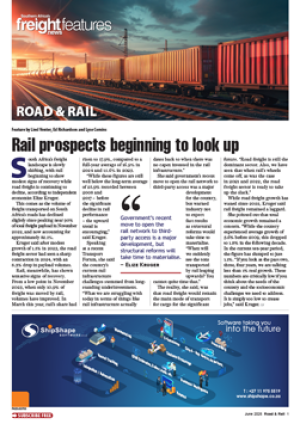While range anxiety is slipping down the list of concerns of potential vehicle owners, the logistics industry is facing a number of challenges transporting lithium-ion battery chemicals and the batteries themselves.“The rapidly growing popularity of electric vehicles will cause demand for lithium-ion batteries to soar over the next decade,” wrote Wolfgang Bernhart, a partner at Roland Berger in Stuttgart in a blog. “This will create new supply chain risks, particularly around raw and refined battery materials,” he predicts. There is also a risk in transporting electric vehicles. In March this year the Felicity Ace car carrier sank off Portugal after firefighters fought a blaze for 13 days. It was speculated that the fire started in an EV battery and then spread to other electric cars in the holds, which were carrying 4 000 vehicles. Lithium-ion batteries are classified as dangerous goods when new and hazardous waste at the end-of-life.The reason is that most vehicle lithium batteries contain a f lammable electrolyte and have an extremely high energy density. They can overheat and ignite through a short circuit, improper design or assembly and physical damage. Lithium itself is classified as both a health hazard and fire risk. Lithium powder may ignite spontaneously when exposed to air, and also reacts to water.Logistics companies are having to establish new routes as automakers reduce their dependence on China, which at present controls around 80% of the metals that go into electric vehicle batteries.Fitch Solutions predicts that Australia, Argentina, Chile, and Canada will become key hubs in the EV battery supply chain due to their increasing share of global lithium, nickel and cobalt production.Then there is pressure on battery manufacturers to recycle.A draft European Union battery directive will, if passed, increase the amount of recycled content in EV batteries from 2030 and also force producers to organise and finance the collection, treatment and recycling of waste batteries. Legislation may not be necessary due to the value of the cobalt, copper, nickel and lithium in the batteries. “Mining” the end-of-life batteries will reduce supply risks and the overall carbon footprint of the batteries.It is estimated that up to 15 tons of CO2 is emitted for every ton of lithium extracted from hard rock mines.Those emissions, as well as the logistics to the battery plant, are included in the full lifecycle carbon footprint calculations of the vehicle.Researchers at Finland's Aalto University estimate that the carbon footprint of the materials obtained by recycling electric car batteries is 38% smaller than that of virgin raw materials.All of which sparks new opportunities for logistics companies. It is estimated that the global transport battery market will reach $146.23 billion by 2027, from $86.24bn in 2021.It is estimated that the market will grow at a compound rate of 9.2% between 2021 and 2027, according to the Battery Market by Transport, Size, Global Forecast 2022-2027, Industry Trends, Share, Growth, Impact of COVID-19, Opportunity Company Analysisreport published in May.

